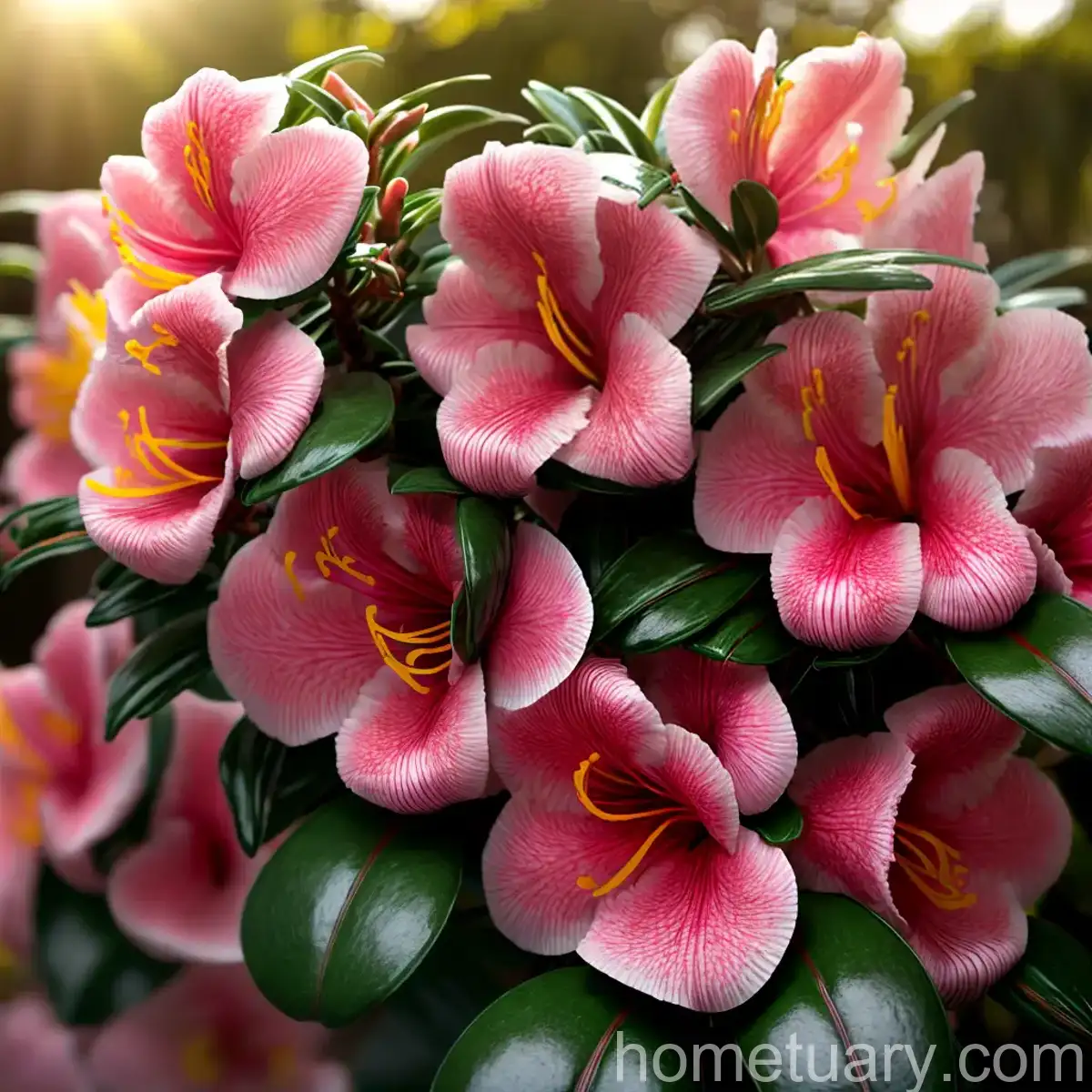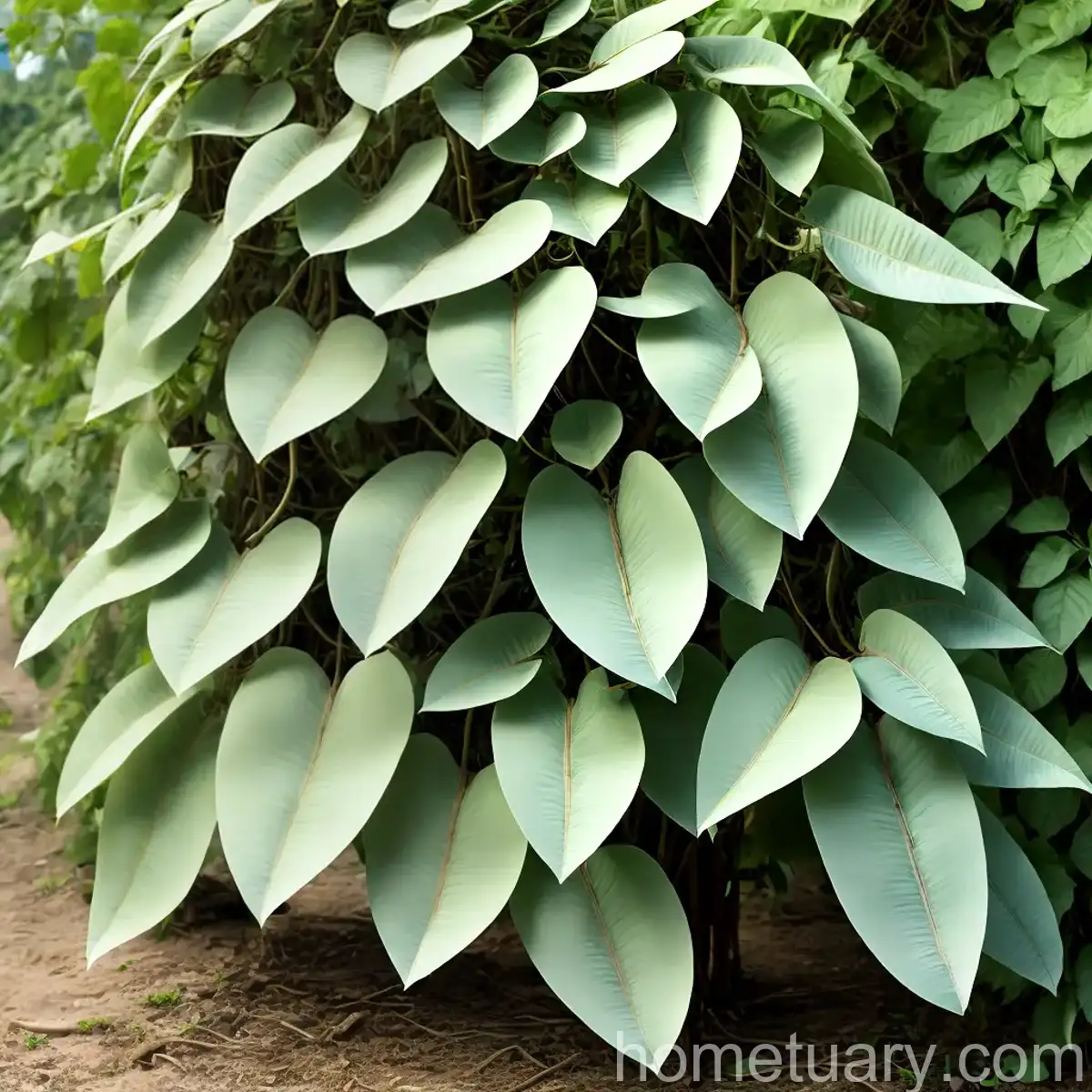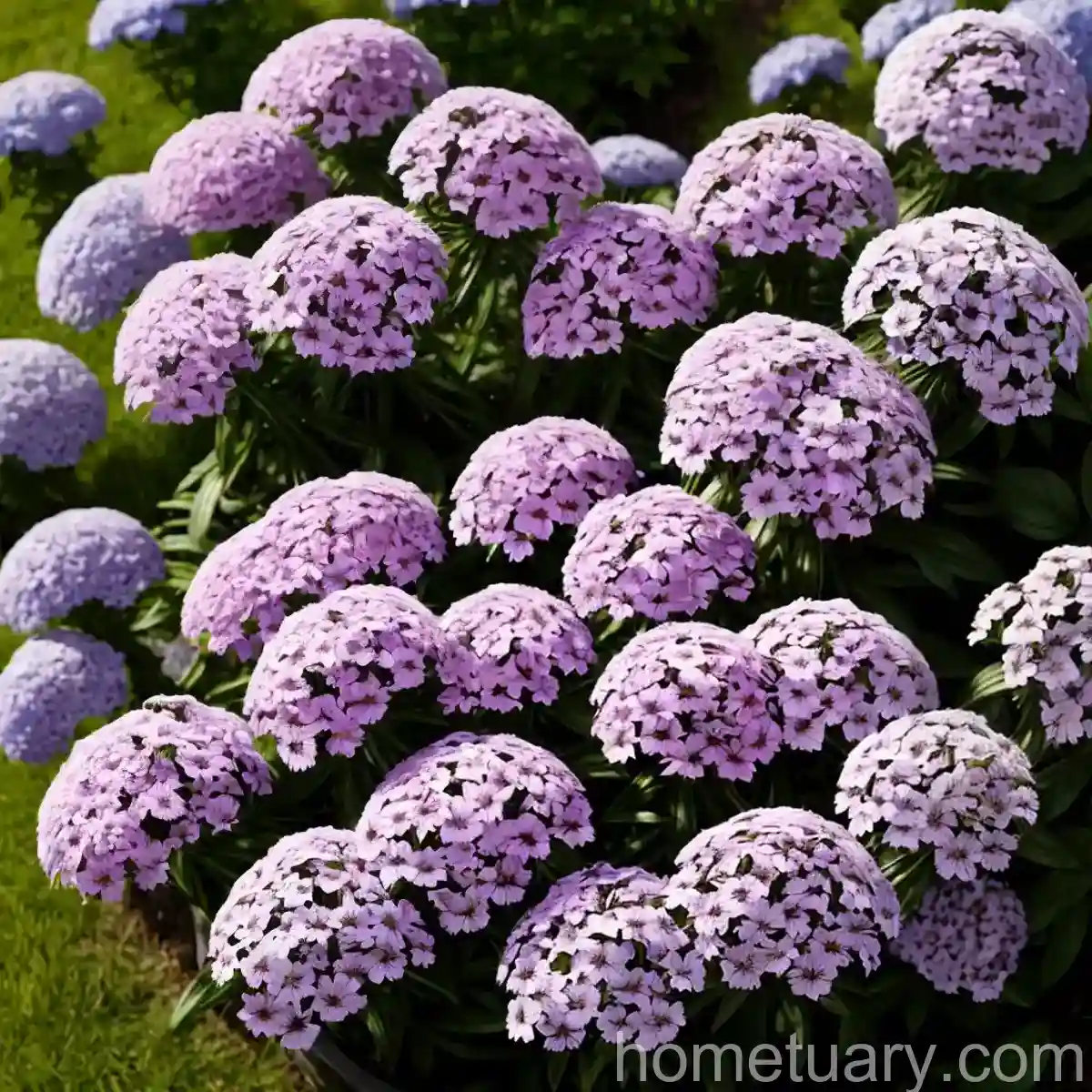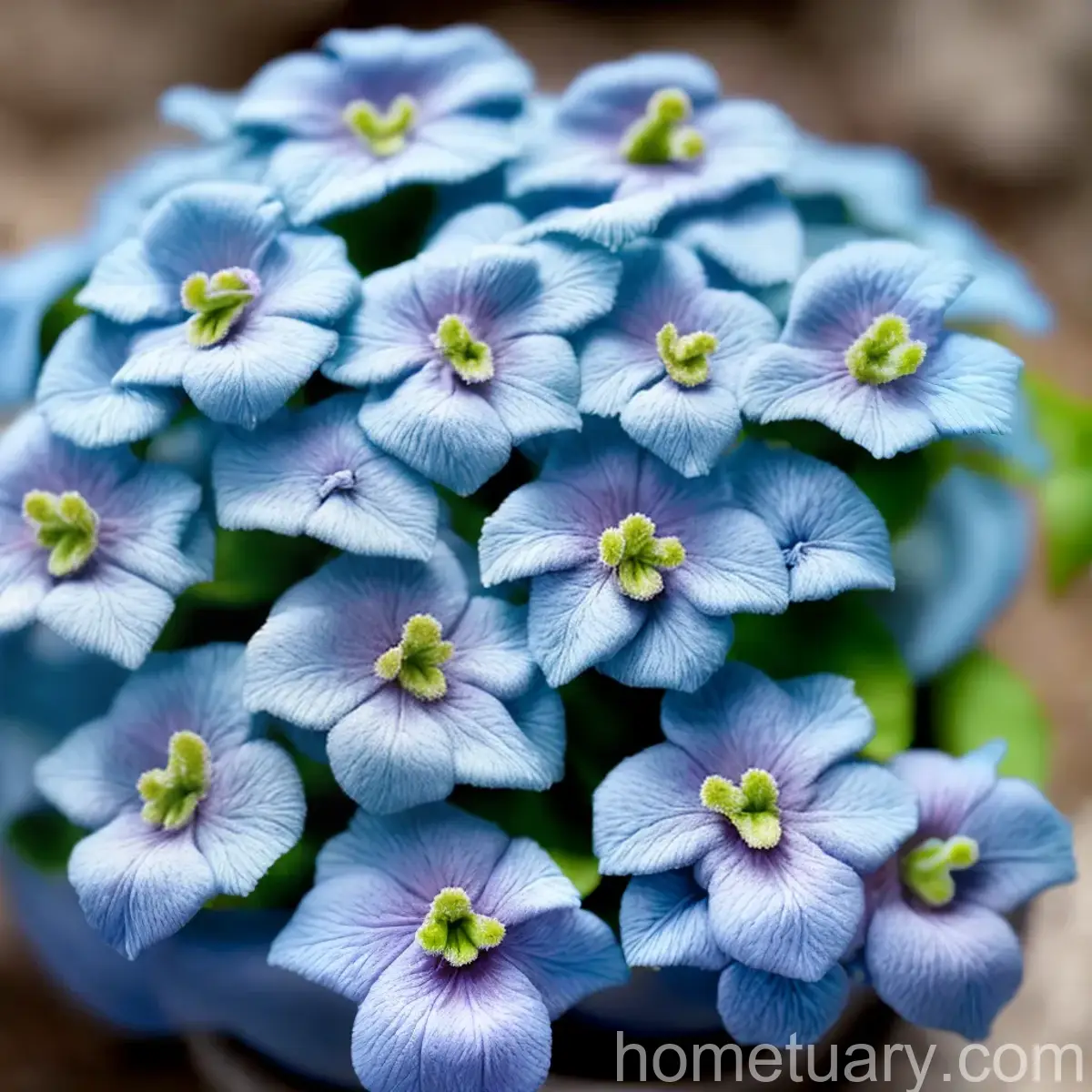The Allure of Gaillardia ‘Tokajer’: A Comprehensive Guide for Plant Enthusiasts
Gaillardia ‘Tokajer,’ commonly known as the blanket flower, is a vibrant and hardy perennial that has enraptured the hearts of plant enthusiasts and landscape designers alike. With its stunning array of colors and remarkable resilience, this wildflower has become a beloved feature in gardens, parks, and natural landscapes. In this comprehensive guide, we will delve into the world of Gaillardia ‘Tokajer,’ exploring its cultural significance, uses, preferred growing conditions, maintenance techniques, diseases, and much more. Whether you are an avid gardener, a landscaping aficionado, or simply have an appreciation for the beauty of nature, this guide is tailored to deepen your understanding and appreciation for this captivating plant.
What is the Gaillardia ‘Tokajer’ Plant?
Gaillardia ‘Tokajer’ is a cultivar of the Gaillardia genus, which belongs to the Asteraceae family. This genus encompasses a diverse group of flowering plants, commonly known as blanket flowers, due to their resemblance to colorful blankets. The ‘Tokajer’ variety is particularly renowned for its striking blooms, which feature a harmonious blend of vibrant hues. The flowers of Gaillardia ‘Tokajer’ bear a resemblance to the traditional Native American blankets, showcasing a captivating combination of colors that range from fiery shades of red and orange to mellow tones of yellow and peach.
The botanical elegance of Gaillardia ‘Tokajer’ is further accentuated by its distinct central disc florets, which are surrounded by ray florets, creating an eye-catching daisy-like appearance. This perennial plant is cherished for its extended bloom period, providing a continuous display of color throughout the spring, summer, and fall seasons. Whether planted as a border, a focal point in a garden, or a component of a wildflower meadow, Gaillardia ‘Tokajer’ radiates an irresistible charm that easily captures the attention of onlookers.
Key Takeaways – Gaillardia ‘Tokajer’
The following key takeaways will serve as a roadmap for our exploration of Gaillardia ‘Tokajer’ in this comprehensive guide:
- Cultural significance and uses of Gaillardia ‘Tokajer’
- Optimal water, sunlight, and soil requirements for successful cultivation
- Fertilization, pruning, and propagation techniques for Gaillardia ‘Tokajer’
- Insights into the plant’s popularity and common diseases
- Strategies for disease diagnosis, pest control, and maintenance
By delving into these key aspects, we will unravel the essence of Gaillardia ‘Tokajer’ and understand the techniques required for nurturing this captivating perennial.
Culture and Uses of Gaillardia ‘Tokajer’
Cultural Significance
Gaillardia ‘Tokajer’ holds extensive cultural significance, tracing its roots to the heartland of North America. Native to regions such as the Great Plains, this resilient wildflower has been embraced for centuries by Indigenous peoples, who have revered its vibrant blooms and recognized its ecological value. The striking appearance of Gaillardia ‘Tokajer’ has been symbolically linked to the warmth of the sun and the resplendence of nature, making it a cherished emblem of vitality and beauty.
Ornamental Uses
The ornamental uses of Gaillardia ‘Tokajer’ are vast and varied, making it an invaluable addition to gardens, landscapes, and floral arrangements. Whether utilized as a border plant, a mass planting for naturalizing landscapes, or a colorful component of mixed perennial beds, the blanket flower ‘Tokajer’ reigns supreme in terms of its ornamental appeal. Moreover, the enduring blooms of Gaillardia ‘Tokajer’ make it a favored selection for cut flower arrangements, lending a touch of natural exuberance to indoor settings.
Ecological Importance
Beyond its aesthetic allure, Gaillardia ‘Tokajer’ fulfills a crucial ecological role as a pollinator attractant. The nectar-rich blossoms of this cultivar beckon an array of pollinators, including bees, butterflies, and hummingbirds. By sustaining these vital pollinators, Gaillardia ‘Tokajer’ contributes to the preservation of biodiversity and the health of local ecosystems, reinforcing its pivotal ecological importance.
Water, Sunlight, and Soil Requirements
Achieving optimal growth and vibrancy in Gaillardia ‘Tokajer’ necessitates a judicious understanding of its water, sunlight, and soil requirements. By adhering to these essential guidelines, plant enthusiasts can ensure that this perennial thrives and flourishes in diverse garden settings.
Water
Water Requirements: Gaillardia ‘Tokajer’ exhibits moderate drought tolerance once established, making it suitable for arid and semi-arid climates. However, during the initial phases of growth, consistent moisture is essential to facilitate robust establishment. Adequate watering, especially during periods of scant rainfall, will bolster the plant’s resilience and bloom production.
Irrigation Practices: It is imperative to monitor the moisture levels in the soil, as excessive waterlogging can impede the growth of Gaillardia ‘Tokajer’ and render it susceptible to root rot. The implementation of a well-draining irrigation system, complemented by periodic deep watering, will uphold the plant’s vigor and vitality.
Seasonal Adjustments: During the scorching heat of summer, extra caution should be exercised to prevent the soil from desiccating, as prolonged drought stress can diminish the plant’s blooming capacity. Adjusting the frequency and volume of irrigation to suit the climatic conditions will safeguard Gaillardia ‘Tokajer’ against moisture-related adversities.
Sunlight
Sunlight Requirements: Gaillardia ‘Tokajer’ thrives in full sunlight, exhibiting unparalleled vigor and floriferousness when exposed to at least six to eight hours of direct sunlight per day. Ample sunlight stimulates robust growth and inflorescence production, ensuring a profusion of striking blooms throughout the growing season.
Site Selection: When selecting a planting site, prioritizing locations with unobstructed sunlight exposure is paramount. By choosing sun-drenched areas, such as south-facing borders or open meadows, individuals can harness the full potential of Gaillardia ‘Tokajer’ and witness the magnificence of its radiant floral display.
Shade Tolerance: While Gaillardia ‘Tokajer’ thrives in full sun, it may exhibit diminished bloom production and weakened stems if subjected to prolonged shade. To optimize its growth, practitioners should avoid shadowy locales and prioritize sites that afford abundant sunlight.
Soil
Soil Preferences: Gaillardia ‘Tokajer’ flourishes in well-drained, loamy soil with a moderately acidic to neutral pH range. The plant exhibits commendable adaptability to an assortment of soil types, including sandy, rocky, or clay soils, provided they offer adequate drainage.
Amendment Application: Incorporating organic matter, such as compost or well-rotted manure, into the soil augments its structure and fertility, promoting superior growth and nutrient uptake in Gaillardia ‘Tokajer.’ The introduction of organic amendments is particularly beneficial for impoverished soils, enhancing their water retention and nutrient-holding capacity.
By adhering to these fundamental guidelines on water, sunlight, and soil requirements, enthusiasts can optimize the growing conditions for Gaillardia ‘Tokajer’ and nurture flourishing specimens that epitomize botanical splendor.
Fertilizer, Pruning, and Propagation Techniques
The judicious application of fertilizers, precise pruning techniques, and proficient propagation methods are integral to maintaining the health and vigor of Gaillardia ‘Tokajer.’ By implementing these horticultural practices, plant practitioners can enhance the plant’s sustainability and ornamental appeal, contributing to its long-term prosperity.
Fertilizer
Nutrient Requirements: Gaillardia ‘Tokajer’ thrives in moderately fertile soils and can derive substantial nourishment from well-balanced organic matter present in the soil. To fortify its growth and augment blooming, the application of a balanced, slow-release fertilizer tailored for flowering perennials is recommended.
Fertilization Schedule: Administering fertilizers during the early stages of growth, followed by periodic applications throughout the growing season, sustains the plant’s nutrient reserves and fortifies its physiological processes. A prudent approach to fertilization will foster prolific flower production and foster a resilient root system in Gaillardia ‘Tokajer.’
Organic Alternatives: In lieu of conventional fertilizers, organic alternatives, such as compost tea and fish emulsion, can serve as efficacious nutrient sources, enriching the soil and invigorating the growth of Gaillardia ‘Tokajer without compromising environmental sustainability.
Pruning
Pruning Methodology: Sustaining the vigor and aesthetic appeal of Gaillardia ‘Tokajer necessitates judicious pruning to eliminate spent blooms and rejuvenate the plant. Deadheading, the process of removing faded flowers, not only enhances the plant’s appearance but also stimulates the continuous production of new blooms.
Pruning Frequency: Regular deadheading throughout the growing season, coupled with periodic shearing to rectify leggy growth, preserves the compact form and floriferousness of Gaillardia ‘Tokajer, ensuring an enduring exhibition of vibrant blooms.
Fall Pruning: As the autumn season unfolds, undertaking a comprehensive pruning session to remove the withered foliage and spent inflorescences fosters a rejuvenated appearance in Gaillardia ‘Tokajer, preparing it for the onset of dormancy and the subsequent regrowth in the following season.
Propagation
Propagation Techniques: Gaillardia ‘Tokajer’ can be propagated through multiple techniques, including division, stem cuttings, and seed sowing, enabling practitioners to propagate and proliferate this captivating cultivar with considerable ease.
Division: Dividing mature clumps of Gaillardia ‘Tokajer in early spring or fall facilitates the creation of new plants, each harboring robust root systems and shoot proliferation, thereby expediting the establishment of new specimens.
Stem Cuttings: By propagating Gaillardia ‘Tokajer through stem cuttings during the spring or early summer, practitioners can generate genetically identical clones of the parent plant, ensuring the preservation of its distinctive traits and characteristics.
Seed Sowing: Sowing seeds of Gaillardia ‘Tokajer in well-prepared seedbeds during the spring enables the propagation of diverse varieties and facilitates the cultivation of this captivating wildflower in an expansive array of garden settings.
Through the adept execution of fertilization, pruning, and propagation techniques, plant enthusiasts can perpetuate the splendid allure of Gaillardia ‘Tokajer, perpetuating its ornamental dominance within diverse horticultural settings.
Container Popularity and Uses
The amenability of Gaillardia ‘Tokajer’ to container cultivation underscores its versatility and adaptability, offering a bounty of opportunities for enthusiasts to integrate this captivating perennial into their living spaces and outdoor settings.
Container Selection
Container Criteria: Selecting containers with ample depth and volume is essential for accommodating the robust root system of Gaillardia ‘Tokajer, ensuring unhindered growth, and facilitating efficient nutrient absorption.
Drainage Provisions: Integrating adequate drainage apertures within the container ameliorates the risk of water accumulation, safeguarding the plant against root rot and physiological abnormalities induced by excessive moisture.
Uses of Container-Grown Gaillardia ‘Tokajer’
Ornamental Display: Cultivating Gaillardia ‘Tokajer in containers bestows the liberty to orchestrate breathtaking floral exhibitions on patios, balconies, and entryways, enriching outdoor spaces with the exuberance of its resplendent blooms.
Space Optimization: The compact nature of container-bound Gaillardia ‘Tokajer makes it an idyllic candidate for vertical gardening, green walls, and compact urban landscapes, contributing to the optimization of available space and the enhancement of aesthetic appeal.
Maintenance Considerations
Watering Regimen: Containers necessitate frequent monitoring of moisture levels, necessitating a meticulous approach to watering to safeguard the vitality and floriferousness of Gaillardia ‘Tokajer.
Fertilization Regime: Regular fertilization with well-balanced, water-soluble fertilizers is indispensable to replenish the nutrient reserves of container-grown Gaillardia ‘Tokajer, sustaining its vibrant growth and enduring bloom production.
By leveraging the adaptability and decorative charm of Gaillardia ‘Tokajer in container cultivation, enthusiasts can infuse their living environments and outdoor spaces with the botanical splendor of this alluring perennial.
Common Diseases and Disease Diagnosis
The longevity and visual appeal of Gaillardia ‘Tokajer are contingent upon the effective management of prevalent diseases and the expedient diagnosis of physiological aberrations. By understanding the common diseases and their diagnostic indicators, practitioners can expeditiously intervene and alleviate the health concerns afflicting this cherished perennial.
Common Diseases
Powdery Mildew: The advent of powdery mildew, characterized by the development of a white, powdery efflorescence on the leaves and stems of Gaillardia ‘Tokajer, can impede photosynthetic processes and compromise the plant’s vigor.
Root Rot: Waterlogged, poorly drained soils can precipitate the onset of root rot, leading to the instigation of root necrosis, wilting foliage, and diminished plant vitality in Gaillardia ‘Tokajer.
Botrytis Blight: Prolonged periods of humidity can predispose Gaillardia ‘Tokajer to botrytis blight, manifesting as brown lesions on the leaves and promoting the development of necrosis in floral tissues.
Disease Diagnosis
Symptomatic Presentation: The visual manifestation of diseases, such as discolored foliage, necrotic lesions, and fungal growth, serves as a primary diagnostic indicator for identifying prevalent diseases in Gaillardia ‘Tokajer.
Physiological Abnormalities: Indications of stunted growth, leaf wilting, and diminished blooming in Gaillardia ‘Tokajer signal physiological aberrations, necessitating prompt diagnosis and intervention to rectify underlying health concerns.
By scrutinizing the symptoms of common diseases and promptly diagnosing physiological abnormalities, practitioners can elicit targeted management strategies to fortify the vitality and visual allure of Gaillardia ‘Tokajer.
Common Pests and Pest Control
The advent of pesky invaders can impede the growth and ornamental splendor of Gaillardia ‘Tokajer, necessitating vigilant vigilance and efficacious pest control measures to safeguard the plant’s well-being.
Common Pests
Aphids: Invasive aphids can colonize the succulent tissues of Gaillardia ‘Tokajer, siphoning sap and fostering the proliferation of honeydew-producing insects, inducing physiological stress in the plant.
Spider Mites: The assault of spider mites, evidenced by stippled foliage and fine webbing, poses an ardent threat to Gaillardia ‘Tokajer, compelling the implementation of pest control measures to avert leaf desiccation and impaired growth.
Whiteflies: Whitefly infestations, denoted by the presence of diminutive, white-winged insects, instigate foliage discoloration and attenuated photosynthetic efficiency in Gaillardia ‘Tokajer, mandating proactive intervention to forestall detrimental repercussions.
Pest Control Measures
Cultural Practices: Imposing stringent hygiene standards in the garden and diligently removing debris and detritus mitigates the likelihood of pest infestations in Gaillardia ‘Tokajer, curbing the propagation and dissemination of disruptive pests.
Biological Control: Leveraging biological agents, such as predatory insects and parasitic nematodes, acts as a naturalistic pest control strategy, curtailing the population of invasive insects and fostering a balanced ecological equilibrium in the garden.
Targeted Treatments: Administering targeted treatments, including horticultural oils and insecticidal soaps, judiciously eradicates pesky invaders, securing the well-being of Gaillardia ‘Tokajer and fortifying its aesthetic and physiological integrity.
By exercising judicious pest control measures and adopting an integrated approach to pest management, practitioners can protect the resplendence and sustainability of Gaillardia ‘Tokajer, ensuring unhindered growth and floriferousness.
Botanist’s Tips for Gaillardia ‘Tokajer
Planting Time: Optimal planting times for Gaillardia ‘Tokajer encompass the early spring and fall seasons, affording the plant an opportunity to acclimate to the growing environment and establish robust root systems.
Mulching Practices: Profuse application of organic mulch, such as shredded bark or compost, around the base of Gaillardia ‘Tokajer attenuates soil moisture fluctuations, suppresses weed proliferation, and enriches the soil through gradual decomposition.
Deadheading Techniques: Diligent deadheading during the growing season sustains the bloom production and extends the flowering period of Gaillardia ‘Tokajer, ensuring an enduring exhibition of colorful blooms throughout the season.
Overwintering Preparation: Implementing an insulating layer of mulch around the base of Gaillardia ‘Tokajer in the autumn enhances its resilience to frost and safeguards the plant against the vicissitudes of inclement winter weather.
By embracing these sagacious tips, practitioners can optimize the cultivation and maintenance of Gaillardia ‘Tokajer, fostering its longevity and botanical allure through discerning horticultural practices.
Fun Facts about Gaillardia ‘Tokajer
- The genus name “Gaillardia” is a nod to M. Gaillard de Charentonneau, an 18th-century French botanist, honoring his botanical contributions through taxonomic nomenclature.
- Gaillardia ‘Tokajer’ is renowned for its exceptional capacity to attract pollinators, including bees, butterflies, and birds, augmenting the ecological harmony of diverse landscapes.
- The blanket flower moniker alludes to the semblance of Gaillardia blooms to the vibrant hues and patterns adorning traditional Native American blankets, encapsulating an essence of cultural reverence and natural splendor.
- Gaillardia ‘Tokajer’ exhibits commendable drought tolerance and thrives in xeriscapes and water-wise landscapes, epitomizing resilience and adaptability in arid growing conditions.
Links to External Resources
- Gaillardia: A Study in Botanical Splendor
- Perennial Plant Association: Cultivating Gaillardia ‘Tokajer’
- Royal Horticultural Society: Gaillardia ‘Tokajer’ Cultivation Guide
- National Gardening Association: Gaillardia ‘Tokajer’ Perennial Primer
- American Society for Horticultural Science: Gaillardia ‘Tokajer’ Floral Elegance
In conclusion, Gaillardia ‘Tokajer’ represents an emblem of botanical exuberance and horticultural elegance, captivating enthusiasts with its resplendent blooms and enduring charm. By embracing the insights and guidelines delineated in this comprehensive guide, practitioners can cultivate and nurture Gaillardia ‘Tokajer with adeptness, fostering its longevity and ornamental allure within diverse horticultural settings. In doing so, the resplendent allure of this perennial cultivar will perpetuate its botanical dominance, enlivening gardens, landscapes, and natural habitats with its entrancing floral display and cultural significance.
With a profound understanding of the complexities and delights of Gaillardia ‘Tokajer, plant enthusiasts and















